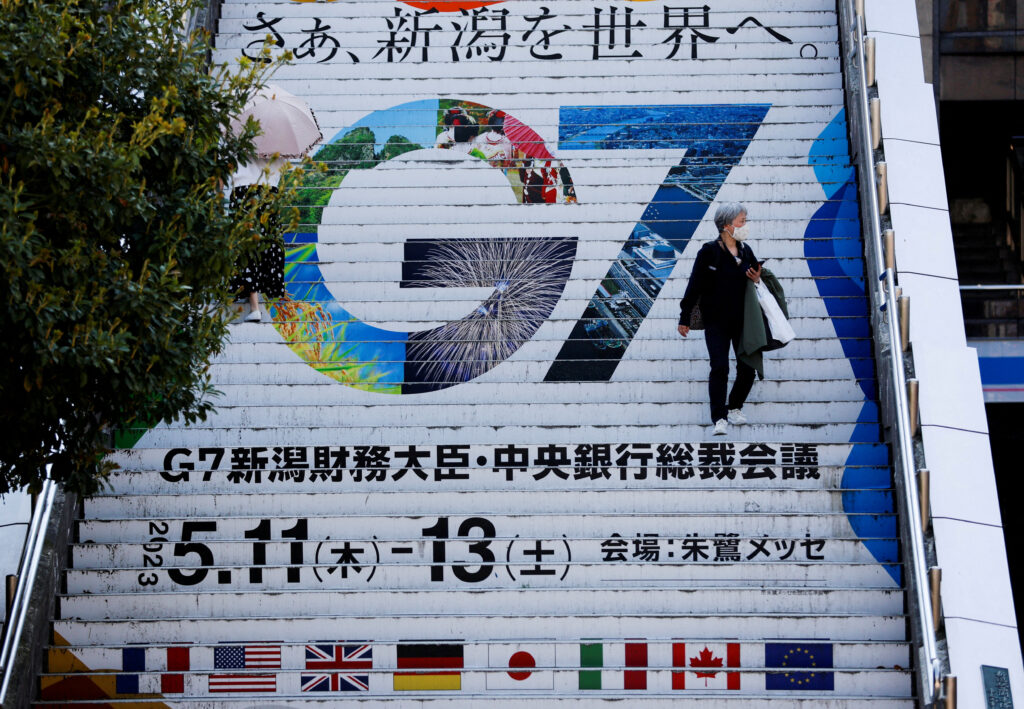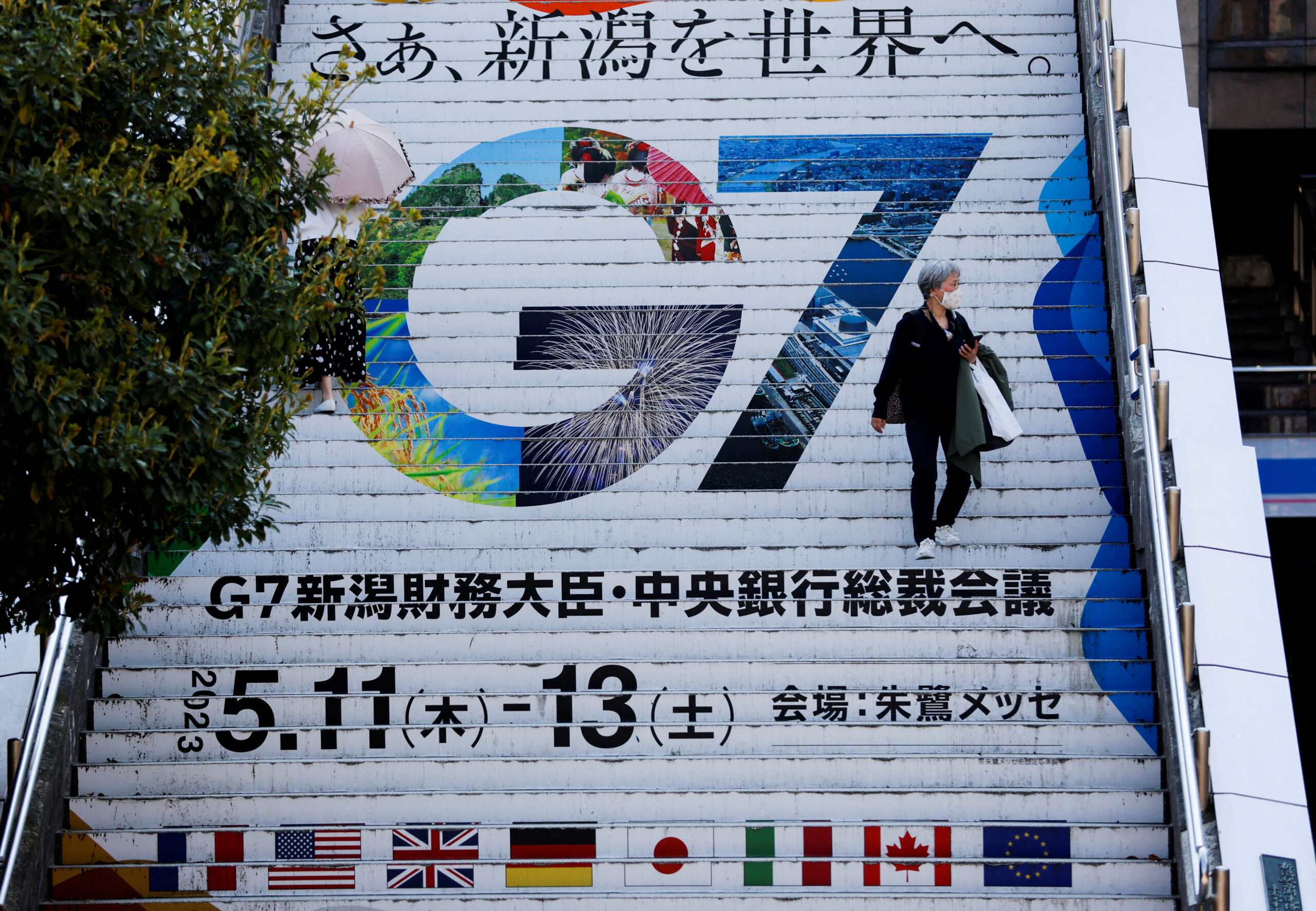
By Leika Kihara and Andrea Shalal
NIIGATA, Japan (Reuters) – A standoff in Washington over raising the U.S. debt ceiling overshadowed a meeting of Group of Seven (G7) finance leaders’ starting on Thursday, heightening U.S. recession fears as central banks seek a soft landing for the global economy.
President Joe Biden piled pressure on Republican lawmakers on Wednesday to move quickly to raise the limit on the government’s permitted borrowing from the current $31.4 trillion or risk throwing the world’s biggest economy into recession.
Treasury Secretary Janet Yellen was expected to face questions from her G7 counterparts, meeting in the Japanese city of Niigata, on how Washington intends to prevent turbulence in financial markets, already jittery after the recent failure of three U.S. regional banks.
“A default would threaten the gains that we’ve worked so hard to make over the past few years in our pandemic recovery. And it would spark a global downturn that would set us back much further,” Yellen said in Niigata on Thursday.
Read More: Russia’s Medvedev warns Moscow will scrap grain deal if G7 bans exports
The U.S. debt crisis is a headache for Japan, which is this year’s G7 chair and the world’s biggest holder of U.S. debt.
“We won’t go into such specific subjects,” Japanese Finance Minister Shunichi Suzuki told reporters on Thursday when asked what kind of solution Japan wanted from the United States.
The G7 finance leaders, instead, will debate ways to better address financial system risks by sharing their understanding of lessons learnt from recent U.S. bank failures, Suzuki added.
“The G7 won’t be able to come up with a solution for what is a purely domestic and political U.S. problem, though the group could reaffirm its resolve to cooperate in stabilising markets in the worst-case scenario,” said Takahide Kiuchi, an analyst at Nomura Research Institute.
“Washington is solely responsible to get this fixed. But when things go wrong, all the other countries bear the brunt.”
GLOBAL OUTLOOK DAMPENS
Global economic risks, including stubbornly high inflation and the fallout from aggressive U.S. and European interest rate increases, will likely be among key topics of debate for the G7 finance ministers and central bankers.
Yellen said the global economy was in a “better place than many had predicted six months ago”, with inflation moderating in many G7 countries including the United States.
Read More: Biden to visit Papua New Guinea in a presidential first after G7 in Japan
Even as rapid rate hikes by the Federal Reserve weighed on the U.S. economy, however, recent data has shown signs of weakness in China, the world’s second-largest economy.
China’s consumer prices rose at the slowest pace in more than two years in April, while factory gate deflation deepened, data showed on Thursday, dashing policymakers’ hopes that a rebound in the country’s demand would underpin global growth.
Other key themes to be discussed at the G7 finance gathering include ways to strengthen the global financial system, steps to prevent Russia from circumventing sanctions over its invasion of Ukraine and diversifying supply chains away from countries like China through partnerships with low- and middle-income nations.
Past U.S. debt ceiling fights have typically ended with a hastily arranged agreement in the final hours of negotiations, avoiding an unprecedented default.
In 2011, the scramble prompted the first downgrade of the top-notch U.S. credit rating. Veterans of that battle warn the current situation is riskier because political divides have widened.
Back then, the G7 finance leaders said in a statement that they were “committed to addressing the tensions stemming from the current challenges on our fiscal deficits, debt and growth.”






